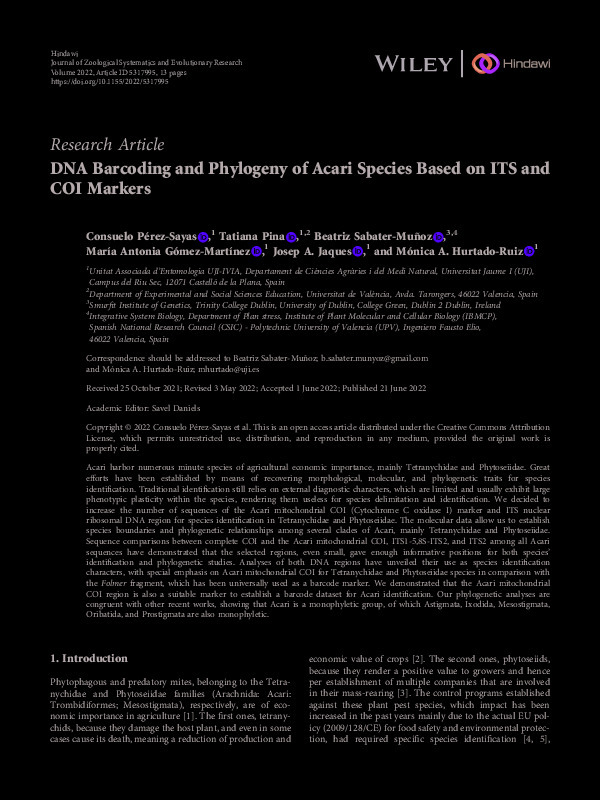JavaScript is disabled for your browser. Some features of this site may not work without it.
Buscar en RiuNet
Listar
Mi cuenta
Estadísticas
Ayuda RiuNet
Admin. UPV
DNA Barcoding and Phylogeny of Acari Species Based on ITS and COI Markers
Mostrar el registro completo del ítem
Pérez-Sayas, C.; Pina, T.; Sabater-Muñoz, B.; Gómez-Martínez, MA.; Jaques, JA.; Hurtado-Ruiz, MA. (2022). DNA Barcoding and Phylogeny of Acari Species Based on ITS and COI Markers. Journal of Zoological Systematics & Evolutionary Research. 2022:1-13. https://doi.org/10.1155/2022/5317995
Por favor, use este identificador para citar o enlazar este ítem: http://hdl.handle.net/10251/202082
Ficheros en el ítem
Metadatos del ítem
| Título: | DNA Barcoding and Phylogeny of Acari Species Based on ITS and COI Markers | |
| Autor: | Pérez-Sayas, Consuelo Pina, Tatiana Gómez-Martínez, María Antonia Jaques, Josep A. Hurtado-Ruiz, Mónica A. | |
| Entidad UPV: |
|
|
| Fecha difusión: |
|
|
| Resumen: |
[EN] Acari harbor numerous minute species of agricultural economic importance, mainly Tetranychidae and Phytoseiidae. Great efforts have been established by means of recovering morphological, molecular, and phylogenetic ...[+]
|
|
| Palabras clave: |
|
|
| Derechos de uso: | Reconocimiento (by) | |
| Fuente: |
|
|
| DOI: |
|
|
| Editorial: |
|
|
| Versión del editor: | https://doi.org/10.1155/2022/5317995 | |
| Código del Proyecto: |
|
|
| Agradecimientos: |
We would like to acknowledge L.A. Escudero (Mas Badia Center, IRTA, Girona, Spain) for providing Phytoseiidae specimens from different fruit tree growing areas and especially to P. Troncho (UJI, Greenhouse technician) for ...[+]
|
|
| Tipo: |
|









